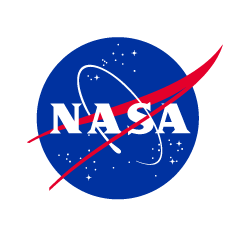Upon leaving the Breton coastlines after my Ph.D., I started a postdoc at the Colorado School of Mines. After one month in the Colorado mountains, I traveled to Newport, Oregon, to board the Bold Horizon for one month of measurements offshore of San-Francisco for the NASA S-MODE (Sub-Mesoscale Ocean Dynamics Experiment) field campaign.
S-MODE
ʻAʻohe o kahi nana o luna o ka pali; iho mai a lalo nei; ʻike ke au nui ke au iki, hea lo a he alo. The top of the cliff isn’t the place to look at us; come down here and learn of the big and little currents, face to face (Pukui, 1983, 24).
If you asked a random person about the color of the ocean, they would probably tell you that it’s some shade of blue or green. But perhaps that shade of blue looks slightly different to you than it does to the random stranger you’re bothering about the color of the ocean. The way you see color depends on many things: the way an object interacts with incoming light, the color of that incoming light, and even the way your eyes perceive that light.
NASA’s S-MODE mission faces quite the challenge: robustly observe, for the first time, ocean features spanning up to about 6.2 miles (10 kilometers) across. Currently, the oceanographic community routinely observes and studies very large ocean features, primarily through space-based instrumentation. These include strong currents such as the Gulf Stream that runs from Florida along the East Coast of the United States all the way to western Europe. Large vortexes are also observed – these being the cyclones and anticyclones you may have seen on your evening weather forecasts.
It’s like stumbling through a thick forest and breaking out into a glade. A quiet has settled on this piece of sea as the waves calm. You can’t make a good map to get to this place. In the ocean, these glades are always moving, twisting, being born into life by the collision of great currents, then breaking apart, fracturing and sinking beneath the waves. The cold water brought from below by the coastal winds creates a fog that lies heavy on the sea surface, creating this small, calm spot.
My favorite part of being at sea is the opportunity to see unique parts of the natural world that aren’t accessible from land. My colleagues have done a fantastic job in their blog posts explaining the science that we’ve been conducting during S-MODE, so I want to take this opportunity to describe some of the sights that those of us on the Bold Horizon have been able to enjoy during our field work: birds, mammals, weather, and stars.
Completing more than 80 hours of science flights, NASA Armstrong Flight Research Center’s B-200 King Air supports the Sub-Mesoscale Ocean Dynamics Experiment (S-MODE) in October.
While normally stationed at NASA Armstrong in Edwards, Calif., the aircraft was temporarily stationed at NASA’s Ames Research Center in California’s Silicon Valley to study ocean currents and winds off the coast of San Francisco Bay. The King Air had two instruments onboard; one to measure the ocean winds (DopplerScatt), and the other to observe the ocean surface by camera system (MOSES).
Friday, October 28
Aircraft schedule:
- No science - all aircraft in transit back to home base
Ship and in situ plan:
- Bold Horizon
- Recover floats
- Survey as possible
- Exit the frontal area to recover gliders - CTD cast(s) to 500m upon arrival near gliders before pick up.
- Wave Gliders continue surveying eastward
Updates:
I had been patiently waiting and dreaming about this research cruise for months. Yet a few days before traveling from Connecticut to Oregon for ship mobilization, I couldn’t shake a feeling of denial – like I couldn’t believe I was really going to be out in the Pacific Ocean on a research vessel for an entire month.
Thursday, October 27
Aircraft schedule:
- 1030: G-III SF8 takeoff
- 1030-1130: Twin Otter SF12 takeoff
- NET 1100: B200 SF18 takeoff
Ship and in situ plan:
Disclaimer: This material is being kept online for historical purposes. Though accurate at the time of publication, it is no longer being updated. The page may contain broken links or outdated information, and parts may not function in current web browsers. Visit https://espo.nasa.gov for information about our current projects.

